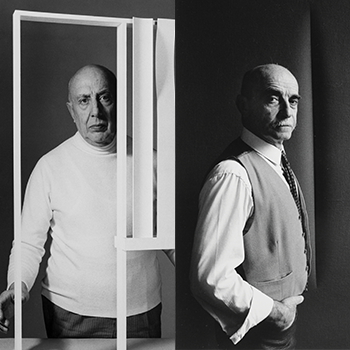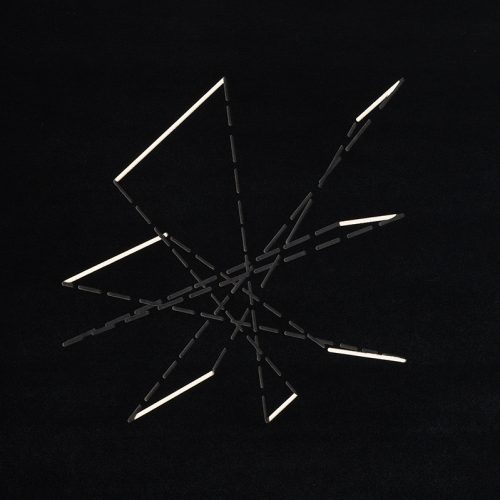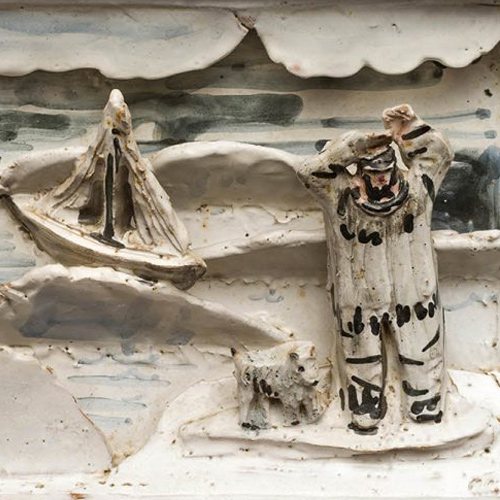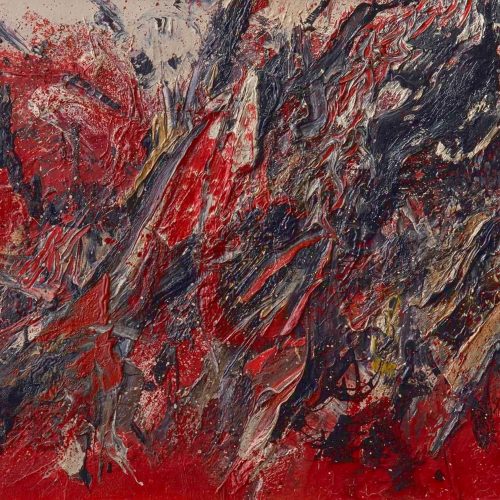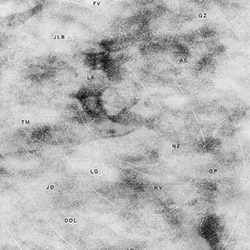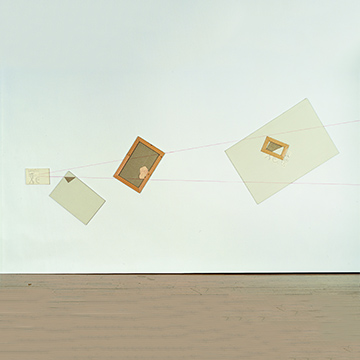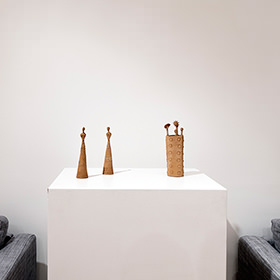



Lucio Fontana was born on February 19, 1899, in Rosario di Santa Fé, Argentina, to Italian parents. From school, to ensure him a solid education, he was sent to Italy, to relatives in Castiglione Olona (Varese). He attended the technical school of the Ballerini Archiepiscopal College, trained in his father’s sculptor’s studio and continued his studies at the School of Master Builders of the “Carlo Cattaneo” Technical Institute in Milan, then at the School of Artisans attached to the Brera Academy.
A World War I veteran, decorated with a silver medal for military valor, he returned to Argentina, where he first worked in his father’s atelier and then opened his own sculpture studio. During these years he participated in several Salons, public competitions and received his first important commissions.
In 1927 he returned to Milan, enrolled in the sculpture course at the Brera Academy and graduated in 1929. 1930 marked a turning point: he participated in the 17th Venice Biennale and began his collaboration with Galleria Il Milione. Between 1934 and 1935, close to the Parisian group Abstraction-Création and the abstractionist milieu of Galleria Il Milione, he produced a series of non-figurative sculptures, which were the protagonists of the first solo exhibition of abstract sculpture in Italy.
In 1940 he moved back to Rosario, where he participated in the competition for the Monumento Nacional a la Bendera and began an intense teaching activity. In the fervid Argentine context the “Manifiesto Blanco”, which marked the beginning of Spatialism, was born in 1946. In some drawings of the same year the expression “Spatial Concept” appeared for the first time, which would accompany much of his future production.
On March 22, 1947 he returned to Italy, settling in Milan. Here he made Concetto spaziale, Uomo atomico and Scultura spaziale, presented at the 1948 Venice Biennale, marking the beginning of a radically new research: no longer figurative or abstract, but authentically spatial. In December 1947 he signed with other artists the first “Manifesto of Spatialism”, born around Carlo Cardazzo’s Naviglio Gallery, with the aim of liberating painting and sculpture from their traditional limitations, opening up to the use of new technologies. On February 5, 1949, he made the first Black Light Spatial Environment at the Naviglio Gallery: papier-mâché silhouettes painted with fluorescent colors, suspended in a dark space lit by Wood’s lamps. In the same year he started the cycle of Holes, pictorial works in which color interventions were perforated with swirls of holes.
He exhibited Twentieth-Century Italian Art at MoMA in New York (1949) and participated in the Venice Biennials of 1948 and 1950. In 1958, an entire room was dedicated to him at the Biennale, where he presented the series of the Gessi, Barocchi, Inchiostri and stem sculptures. In the same year he conceived the celebrated Cuts, which were presented in 1959 in Milan, Paris and international venues such as Documenta in Kassel and the São Paulo Biennale.
In the early 1960s he devoted himself to Oils, canvases covered with thick layers of material, punctured or torn. Prominent among them are the works dedicated to Venice, shown in 1961 at his first solo exhibition in the United States (Martha Jackson Gallery, New York). In 1963 he presented the series of God’s Ends, monochrome oval canvases pierced with holes and decorated with sequins, exhibited in Zurich, Milan and Paris. At the same time he developed the Teatrini, perforated canvases set in elaborate lacquered frames. He also continued his research on Spatial Environments, begun in the 1940s. In 1966, in collaboration with Carlo Scarpa, he won the Prize for Painting at the XXXIII Venice Biennale.
Lucio Fontana died in Varese on September 7, 1968, at the age of 69. His legacy is now enshrined in the world’s most important museums as evidence of an artist who was able to transcend the boundaries of painting and sculpture to found a new, visionary and radical language.
